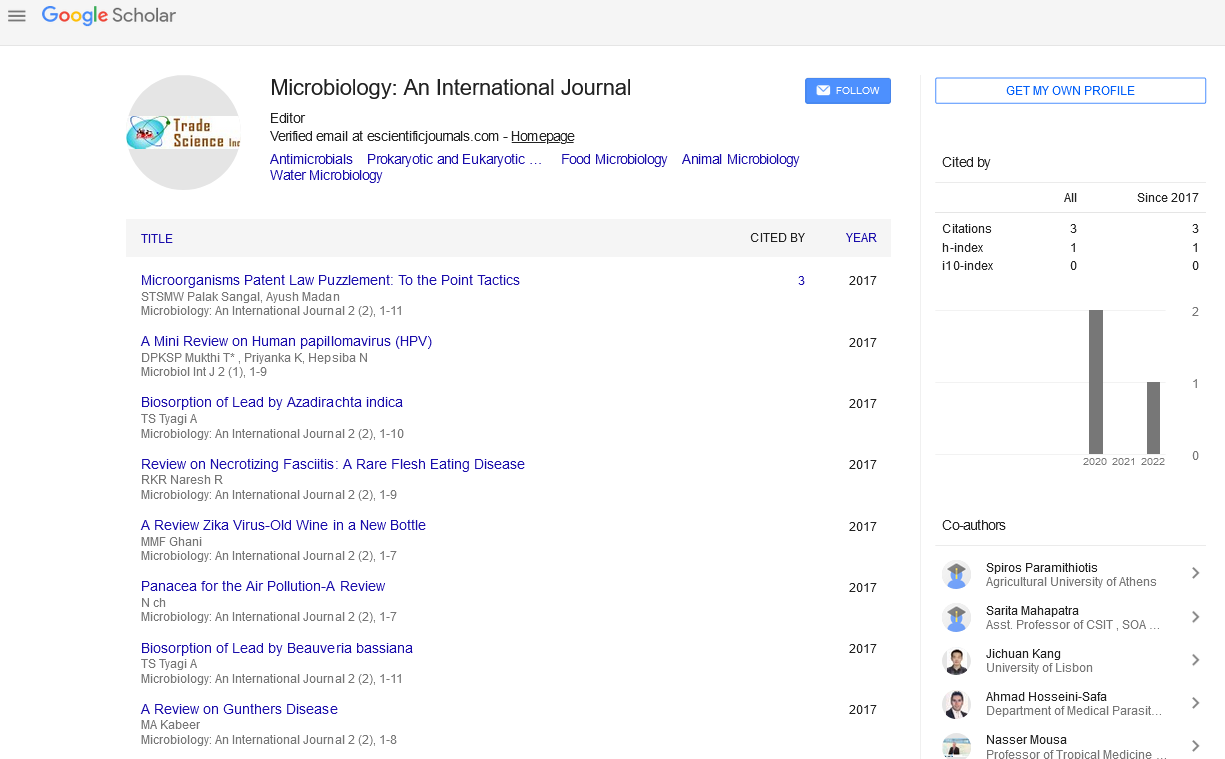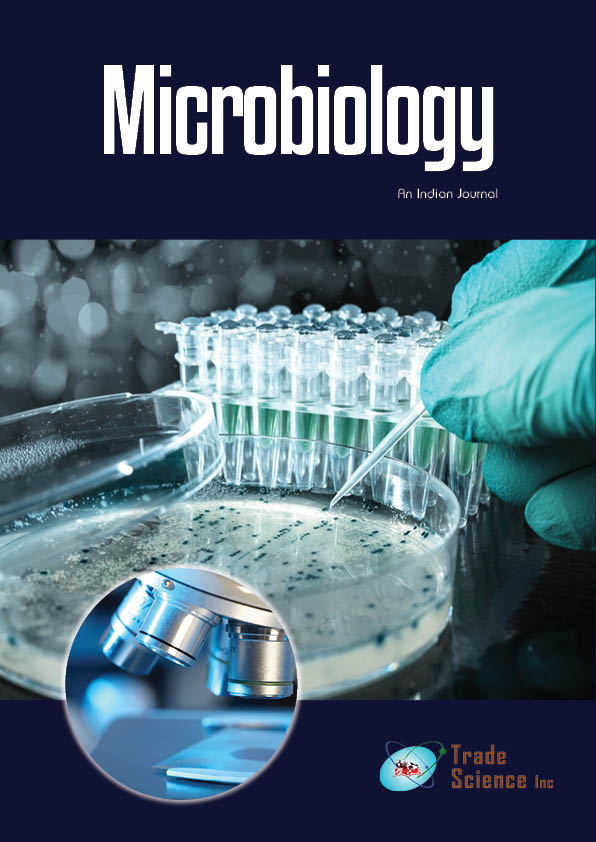Short communication
, Volume: 3( 2)Comparative Phenotypic Characterization of Hybrid Shiga Toxin-Producing
- *Correspondence:
- Anderson K, Department of Medicine, Clinic of Infectious Diseases, Santa Maria della Misericordia Hospital, University of Perugia, Perugia, Italy; E-mail: andersonkevin@uop.it
Received: September 27, 2021; Accepted: October 14, 2021; Published: October 22, 2021
Citation: Anderson K. Comparative Phenotypic Characterization of Hybrid Shiga Toxin-Producing. Microbiol Int J. 3(2):124.
Abstract
Hybrid Shiga toxin-producing Escherichia coli (STEC) and uropathogenic E. coli (UPEC) strains can cause both diarrhoea and urinary tract infections and are phylogenetically located between STEC and UPEC (UTIs). In comparison to conventional UPEC and STEC strains, their pathogenicity qualities and adaptation to varied host environments are unclear. We evaluated the phenotypes of commensal strain MG1655, UPEC strain 536, and STEC strains B2F1 and Sakai to those of the STEC/UPEC hybrid in terms of virulence, including acid resistance, motility, biofilm formation, siderophore generation, and adhesion to human colonic Caco-2 and bladder T24 cells. We also looked at how well the hybrid adapted to artificial urine medium (AUM) and simulated colonic environment media (SCEM). While several hybrids formed extensive biofilms in LB, overall biofilm production in SCEM and AUM was modest or non-existent. At equilibrium, all strains tested showed siderophore activity. Except for MG1655, all strains adhered to Caco-2 cells, with the hybrid exhibiting identical adherence to 536 but 2 and 3 times reduced adherence to B2F1 and Sakai, respectively. Strains generating Stx attached to T24 cells more strongly than strains 536 and MG1655. Within the hybrid strains, overall growth in LB, SCEM, and AUM was consistent, which showed significantly different growth patterns.
Keywords
Phenotype characterization; Uropathogenic Escherichia coli; Shiga toxin-producing Escherichia coli; Hybrid pathogenic Escherichia coli
Introduction
Pathogenic E. coli have a wide spectrum of virulence factors and pathogenic pathways, allowing them to cause localised or disseminated, i.e. systemic, human diseases. E. coli strains that cause diarrhoea must first move through the gut and tolerate digestive components like bile. Similarly, enteric bacteria's tolerance to very acidic conditions has been demonstrated to play a role in their virulence, allowing them to survive the low pH of the stomach and inside macrophages. In order to compete with commensal microbes, strains passing into the small and large intestines must be able to colonise the intestinal epithelium - and then may express various toxins after coming in close association with the intestinal mucosa [1]. One of the many identified pathogenic processes is E. coli's ability to scavenge ferric ions from the host, as the amount of 'free' iron in the host is extremely low and insufficient to allow E. coli to grow [2]. The mammalian host stores iron as ferritin, haemosiderin, or haem. Iron is also bound in serum and other bodily fluids. It binds to highaffinity ironbinding glycoproteins, such as transferrin in the blood and lymph and lactoferrin in the external secretions. To obtain bound iron in the mammalian host,
pathogenic bacteria use highaffinity iron absorption mechanisms like iron chelating siderophores [3]. Motility, which allows E. coli to move toward host cells, chemotaxis toward nutrients required for growth, and dispersion into other places, is also regarded as a harmful feature. Finally, biofilm formation has been linked to the development of UTIs, particularly in catheter-associated UTIs [4].
Conclusion
Finally, we evaluated the STEC/UPEC hybrid's virulence-related features to those of classical UPEC and STEC strains in diverse host microenvironments. Our findings showed that the STEC/UPEC is adapted to both the host's intestinal and extraintestinal environments, and that it expresses phenotypes that are common in both. Furthermore, the results of our phenotypic assays confirmed that these STEC/UPEC hybrids are intermediate between IPEC and ExPEC strains, confirming our prior findings. As a result, pathogenic E. coli strains with heteropathogenicity characteristics are likely to arise express phenotypes of both IPEC and ExPEC, and possibly be able to cause diarrhea and UTI. The existence of these hybrids, together with the frequent horizontal gene transfer of virulence-related genes, renders pathogenic E. coli classification in established pathogroups less distinct. More research into the metabolism, physiology, and genotypic makeup of STEC/UPEC hybrids in comparison to canonical UPEC and STEC strains is needed to fully comprehend the hybrids' niche and reservoir, the effects of Stx-prophage, and the genetic makeup of their virulence properties in order to determine the path of evolution, the formation of new pathotypes, and the potential harm caused by STEC/UPEC hybrids.
References
- Audia JP, Webb CC, Foster JW. Breaking through the acid barrier: an orchestrated response to proton stress by enteric bacteria. Int. J. Med. Microbiol. 2001;291:97-106.
- Edward S, Wong MD. Urinary tract infections Med. Clin. North Am. 1999;59:1225-1234.
- Berger H, Hacker J, Juarez A, Hughes C. Cloning of the chromosomal determinants encoding hemolysin production and mannose-resistant hemagglutination in Escherichia coli J. Bacteriol. 1982;152:1241-1247.
- Schubert S, Darlu O, Clermont A, et al. Denamur Role of intraspecies recombination in the spread of pathogenicity islands within the Escherichia coli species PLoS Pathog. 2009;5:1-10.

